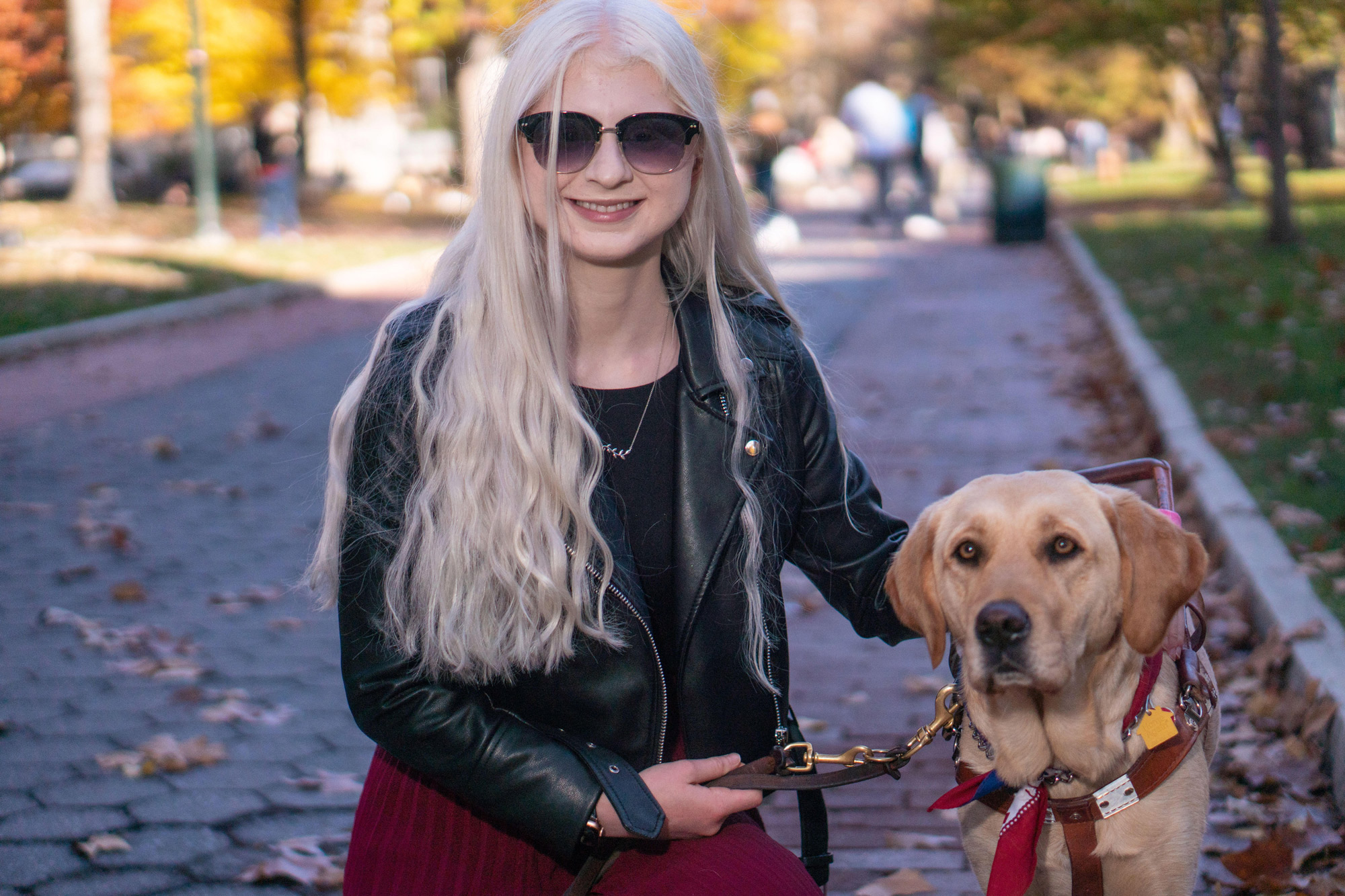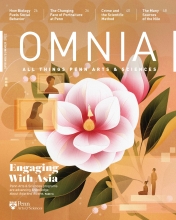Disability Advocacy and the Sciences
Sarah Kane, C’23, a physics and astronomy major, explains how computational research methods—and conversation—can help make the sciences more accessible to researchers with disabilities.
One light year is about 5.88 trillion miles. Now multiply that by 93 billion. That’s how big the universe is. And that’s just the observable universe, or what scientists can currently make out of it. Makes you feel pretty small, doesn’t it?
For Sarah Kane, C’23, a junior majoring in physics and astronomy, this isn’t a bad thing. “I have a really clear memory of being in seventh or eighth grade and watching this video where an astronomer was talking about how all of the galaxies and all of the clusters of galaxies in the universe are stretched across this giant cosmic web,” she says. “I remember thinking about how vast everything was and feeling so small in that moment. But in a good way. I wanted to feel that sort of smallness in comparison to everything else for the rest of my life.”
Kane’s research involves analyzing large data sets that in their own way reflect how much remains unknown about the universe. For her first project, which was funded by the Penn Undergraduate Research Mentoring Program (PURM), she worked with Bhuvnesh Jain, Walter H. and Leonore C. Annenberg Professor in the Natural Sciences and the founder of the Undergraduate Summer Data Science Hangout, an informal gathering for students working on data-driven research. Kane and Eli Wiston, C'22, developed a neural network, a type of machine learning algorithm, that they then tested on data from NASA to find exoplanets, or small planets orbiting outside of the solar system. The neural network helped make the search for these planets—a process Kane describes as akin to looking for a needle in a haystack—more manageable.
“It was exciting because we were given this giant set of data and encouraged to go and play with it and see what we could make happen,” Kane says of her first exposure to academic research. Her second project, also in Jain’s lab, examined the star formation rates in large groups of galaxies called clusters. Another reminder of the vastness of the universe.
But despite the unfathomable reaches of what Kane studies, much of her research takes place on a computer. This, she says, is key to making the sciences more accessible, especially for people with disabilities. “A lot of what astronomy research looks like nowadays is data work on a computer and if it’s on a computer, it should be accessible,” Kane, who has been legally blind since birth, explains.
“Science is a field that should be very accessible to people who are blind or to people with disabilities in general, but in a lot of ways there’s also work to be done.”
Kane developed an interest in using computational research methods after taking classes in programming and data analysis for the natural sciences. While she plans to pursue an academic career in astrophysics in the future, lately she’s been giving a lot of thought to the intersection between disability advocacy and science, noting that, “Science is a field that should be very accessible to people who are blind or to people with disabilities in general, but in a lot of ways there’s also work to be done.”
One in four adults in the United States has some type of disability, according to the Centers for Disease Control and Prevention. But there hasn’t been a lot of attention to disability equity in the sciences, Kane says, adding that this doesn’t mean there’s a lack of interest. “The one thing I really want to mention is that any researcher or scientist I’ve ever talked to about this has been incredibly enthusiastic about making science more accessible, so I think it really is a matter of it not being brought up enough,” she says.
“The more we draw attention to the fact that we’re here and we’re interested in doing this work and we want to be valuable members of the scientific community—the more we talk about that, the more there’s going to be a push for change,” Kane says. “That’s a slow process, unfortunately, but I do believe there will be progress nonetheless.”
In no small part, Kane is helping to bring about that progress. After coming across Astronify, a NASA-developed software that turns astronomical data into sound, making it more accessible to blind and visually impaired researchers, she reached out to one of the project’s leads and participated in usability testing. She’s also collaborated with Disability Advocacy @ Penn, a student organization, to provide resources for students with disabilities to pursue research.
Recently, Kane coordinated a field trip for students from the city’s Overbrook School for the Blind to the Department of Physics and Astronomy. “We got to talk to them about astronomy and physics, and it was really exciting,” she says. “I think I would have really appreciated, when I was in high school, someone telling me: Even if it might be hard and even if there might still be accessibility problems, if you want to do this, if you want to be a physicist or astronomer, you can do it.”




